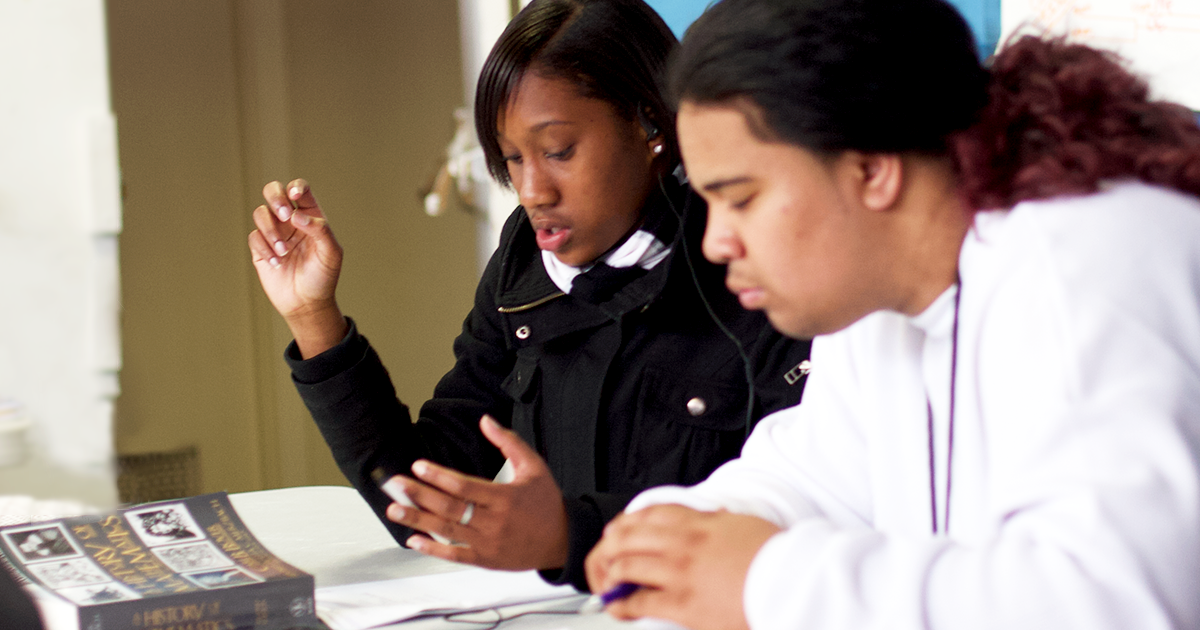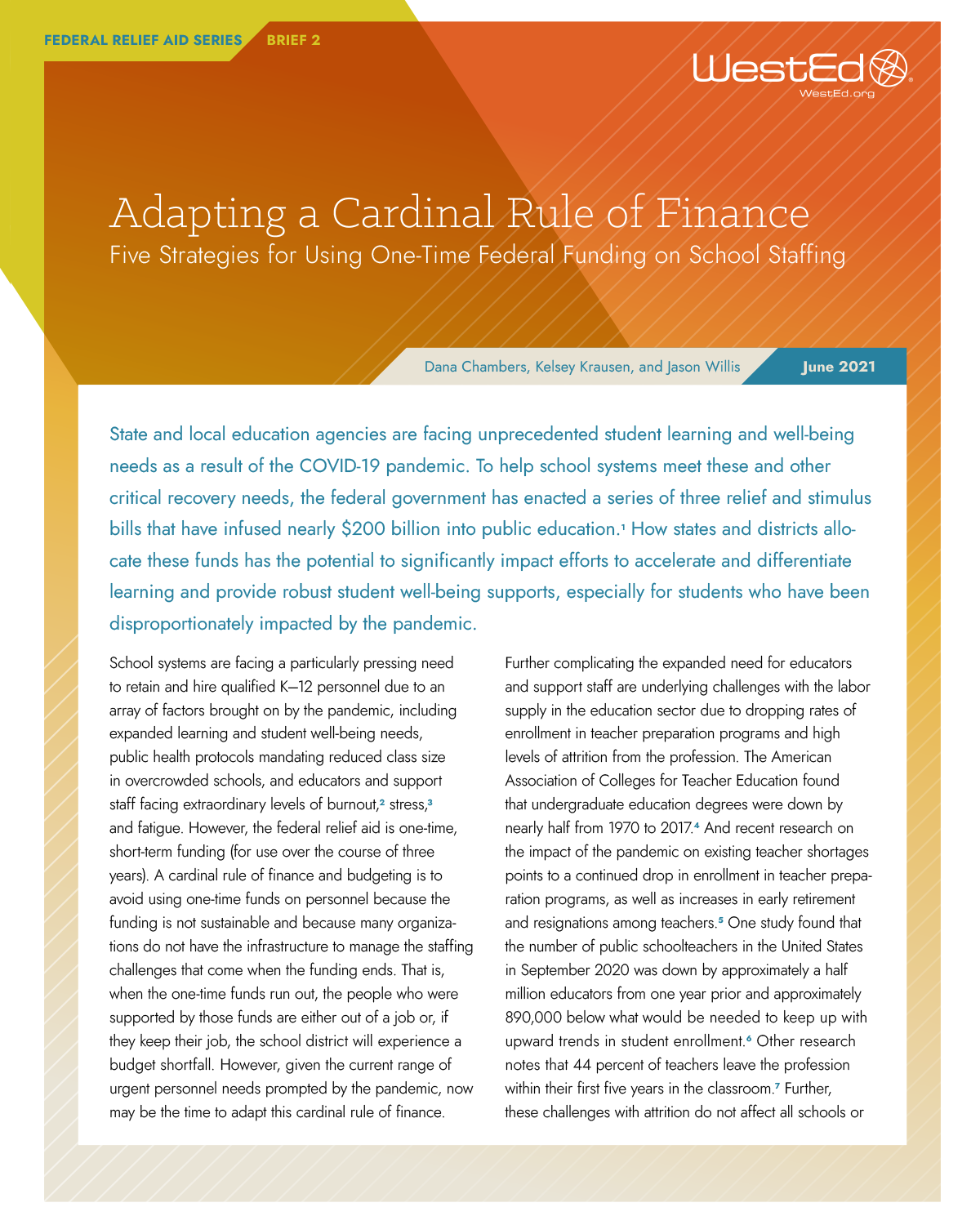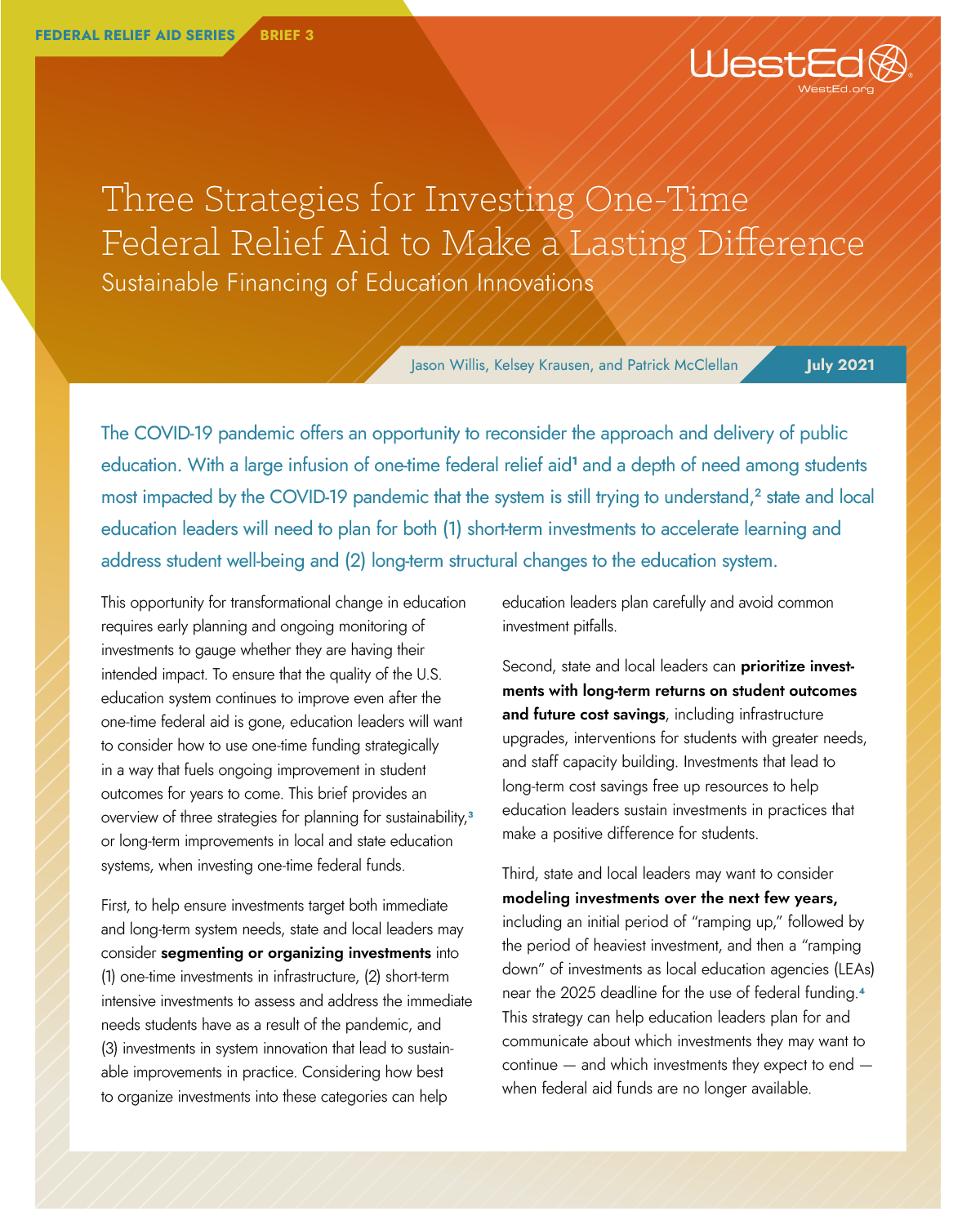With more than $200 billion in federal relief aid for K–12 education, system leaders must consider how to invest in staff, plan for sustainability and change, and ensure the fair allocation and spending of funds so that students who face the highest barriers to learning receive the support they need to succeed.
State and local leaders will need to plan for the following:
- Short-term investments to accelerate learning and address student well-being needs resulting from the pandemic
- Short-term, one-time investments to address infrastructure needs, such as addressing student digital divide and updated facilities
- Long-term structural changes that fundamentally change the systems of educational and student support delivery
This series of policy briefs describe how to use relief aid to support more equitable student learning opportunities.
Strategic Investments of One-Time Funds for Tribal Governments
By Dr. Niki Sandoval, Edith Gurrola, Reginald Ferrell, and Trang Hoang
This fifth brief provides insights from tribal leaders who offer strategies for directing one-time federal funds to improve educational outcomes and strengthen infrastructure for the 574 federally recognized tribes in the United States.
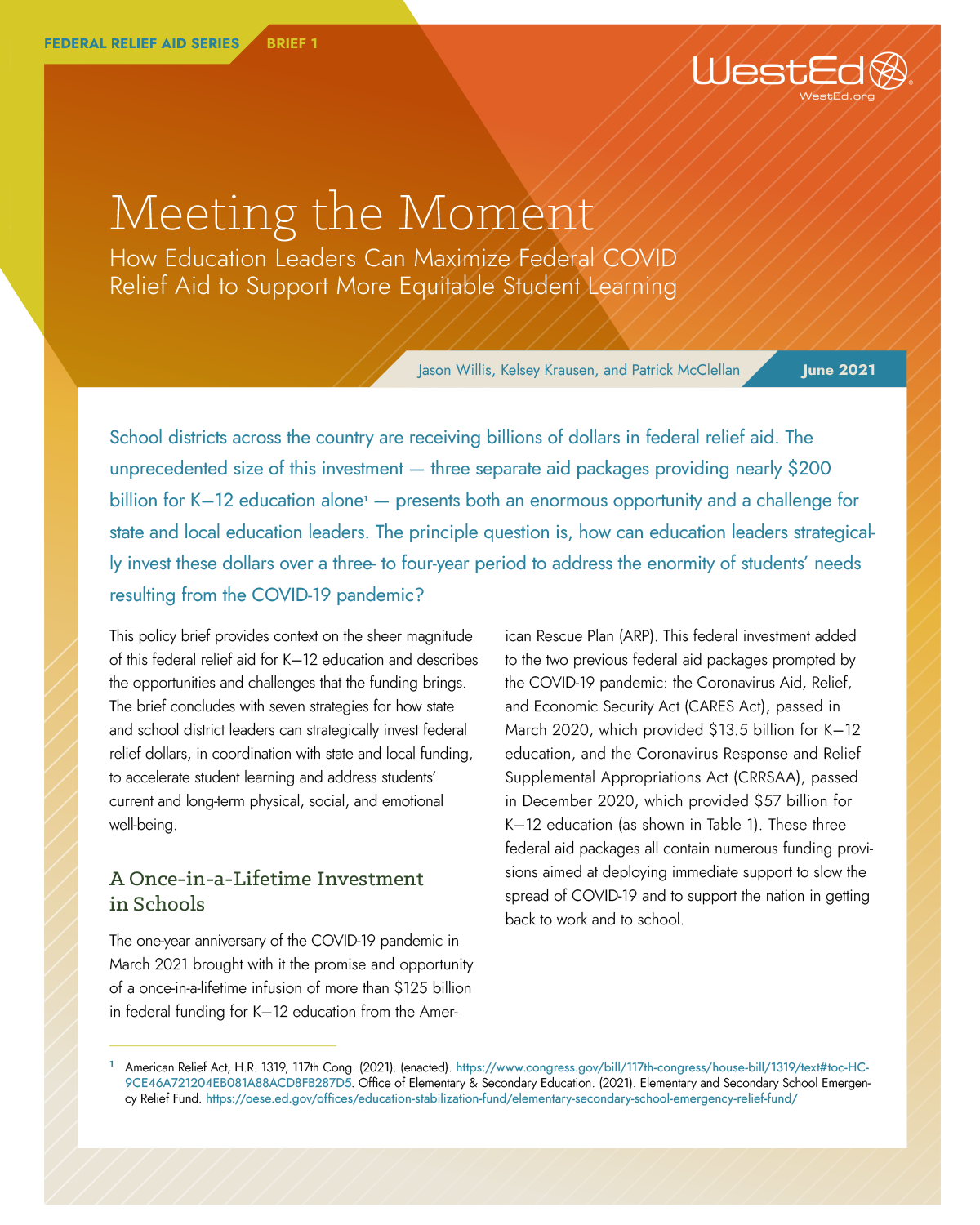 Meeting the Moment: How Education Leaders Can Maximize Federal COVID Relief Aid to Support More Equitable Student Learning
Meeting the Moment: How Education Leaders Can Maximize Federal COVID Relief Aid to Support More Equitable Student Learning
By Jason Willis, Kelsey Krausen, and Patrick McClellan
The first brief provides context on the sheer magnitude of this federal relief aid for K–12 education, describes some of the opportunities and challenges that the funding brings, and offers strategies for investing federal relief dollars to accelerate student learning and address students’ current and long-term well-being.
Adapting a Cardinal Rule of Finance: Five Strategies for Using One-Time Federal Funding on School Staffing
By Dana Chambers, Kelsey Krausen, and Jason Willis
The second brief offers strategies for using federal aid to invest in school staff. If done well, several of these strategies have the added benefit of enabling school systems to invest in longer-term solutions that strengthen the pipeline of educators and support staff to address enduring shortages.
Three Strategies for Investing One-Time Federal Relief Aid to Make a Lasting Difference: Sustainable Financing of Education Innovations
By Jason Willis, Kelsey Krausen, and Patrick McClellan
The third brief provides an overview of three strategies for planning for sustainability, or long-term improvements in local and state education systems, when investing one-time federal funds.
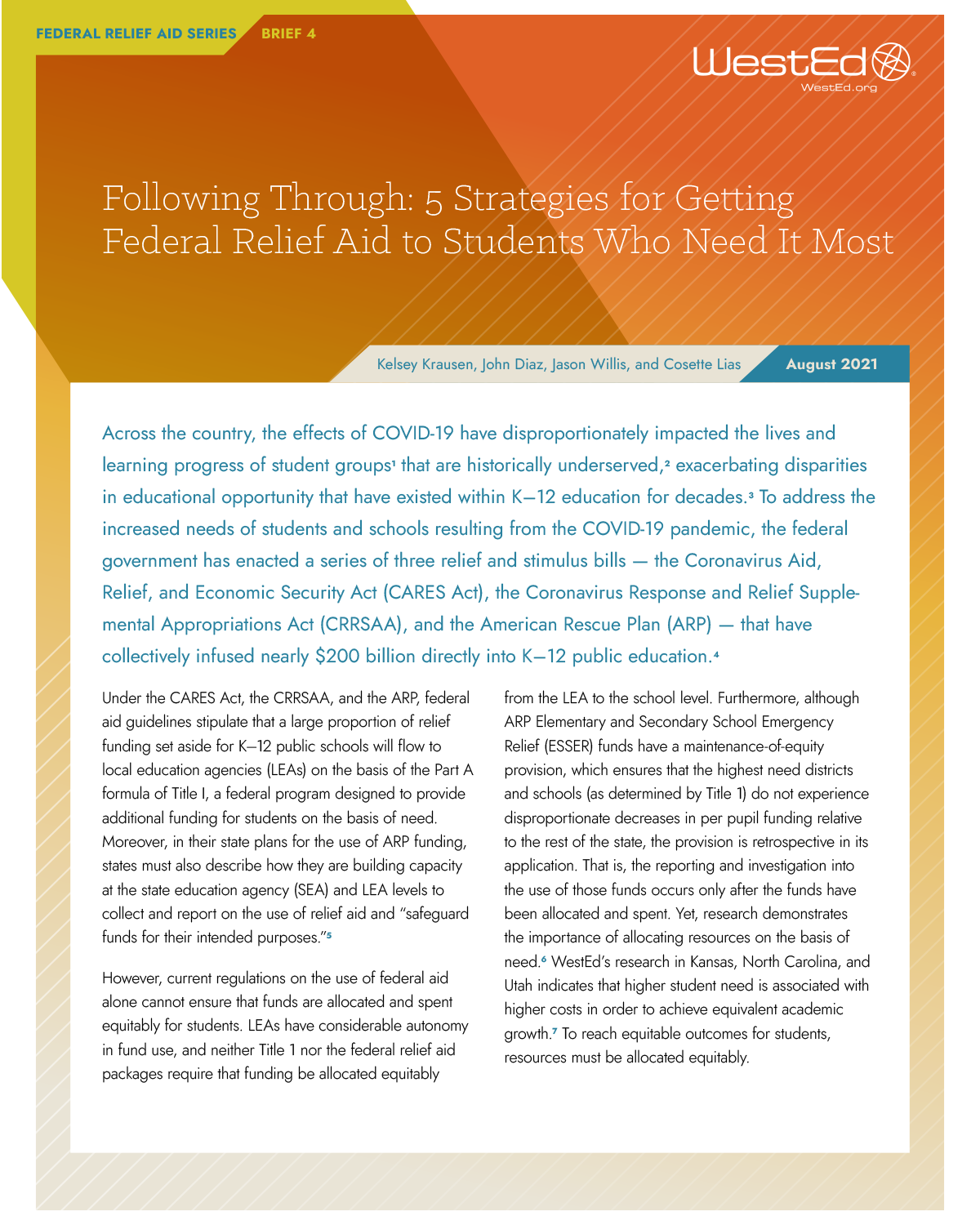 Following Through: 5 Strategies for Getting Federal Relief Aid to Students Who Need It Most
Following Through: 5 Strategies for Getting Federal Relief Aid to Students Who Need It Most
By Kelsey Krausen, John Diaz, Jason Willis, and Cosette Lias
Learn about five strategies that state and local education agency leaders can use to ensure federal aid is allocated equitably at the school level based on need — so that students who face the highest barriers to learning during the pandemic receive additional support.
Learn More
WestEd works with state, regional, and school district leaders to create more effective and equitable education systems. Learn more about Strategic Resource Planning & Implementation at WestEd.

